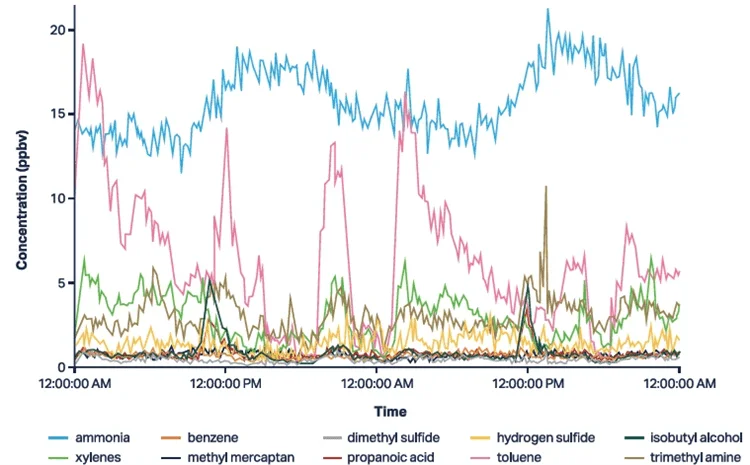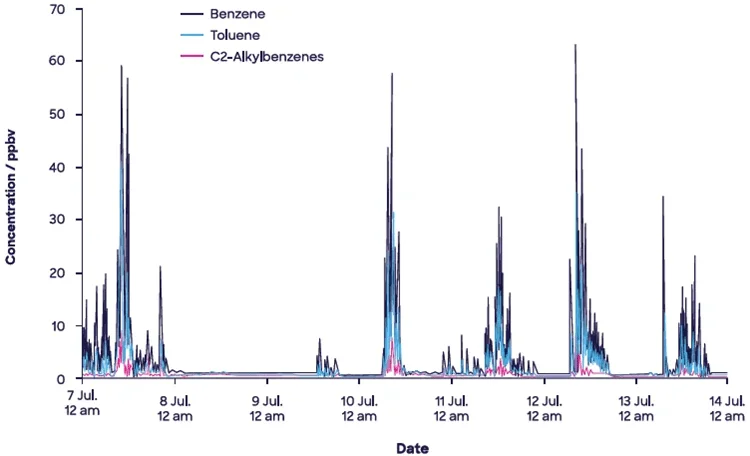Selected ion flow tube mass spectrometry (SIFT-MS) provides selective, sensitive, rapid, and reliable analysis, making it perfect for outdoor air quality monitoring.

Image Credit: posteriori/Shutterstock.com
The technique facilitates real-time detection, identification, and resolution of possible environmental incidents before they cause regulatory or social issues.
Increasingly, global regulators are imposing firmer and more comprehensive emissions requirements due to mounting concerns regarding the effect of airborne pollutants.
Fenceline emissions have conventionally been monitored using offline laboratory methods, like GC-MS or HPLC, but these methods do not provide the time resolution, completeness of analysis, and sensitivity required to deliver timely information on such a complex and dynamic matrix.
Online monitoring has recently emerged as an indispensable tool for rapidly recognizing and addressing the root cause of air quality perturbations.
SIFT-MS is a revolutionary direct mass spectrometric method for continuous, sensitive, selective, and fast real-time analysis of air down to ppbV and pptV levels, depending on the analyte.
The SIFT-MS instrument from Syft Technologies is a unique monitoring apparatus that can measure volatile organic compounds (e.g., sulfides, aldehydes, and aromatics), inorganic compounds (e.g., NOx, SOx, and H2S), and inorganic acid gases (e.g., HCl and HF) directly in a single analysis, removing the need for sample preparation.
Figure 1 displays continuous monitoring data for compounds of environmental significance gathered at the fenceline of a semiconductor fab.
The selectivity and sensitivity of SIFT-MS allow the frequent spikes in toluene to be selectively detected and quantified alongside various other compounds at various concentrations.
Independent trends, like the daily 11 am spike in isobutyl alcohol and propanoic acid, offer important information for engineers to make informed process control decisions.
Figure 2 displays data recorded at the fenceline of a petroleum refinery in New Zealand. When correlated with local wind direction readings, this data allowed process engineers to trace increased emissions recorded at the site boundary to a storage tank.
Automated real-time operation, reporting, and alarms facilitate rapid, instantaneous response to pollution events.
SIFT-MS instruments are compatible with fixed and mobile sampling systems, and instruments mounted on vans or trolleys facilitate targeted identification and isolation of pollution sources.
Multiple-port sampling systems can be applied to provide continuous monitoring over several locations using a single instrument at a fixed location.

Figure 1. Online monitoring data was collected for a selection of environmentally relevant compounds at the boundary of a semiconductor fab. Individual trends over a comprehensive range of emissions can be monitored simultaneously, allowing for a greater understanding of the origins of these unwanted compounds. Image Credit: Syft Technologies

Figure 2. Continuous, speciated monitoring of fenceline emissions provides valuable information to engineers for process improvement and resolving issues. Fenceline data collected at an oil refinery in New Zealand was combined with wind readings to pinpoint a storage tank regularly releasing volatile organic compounds. Image Credit: Syft Technologies

This information has been sourced, reviewed, and adapted from materials provided by Syft Technologies.
For more information on this source, please visit Syft Technologies.